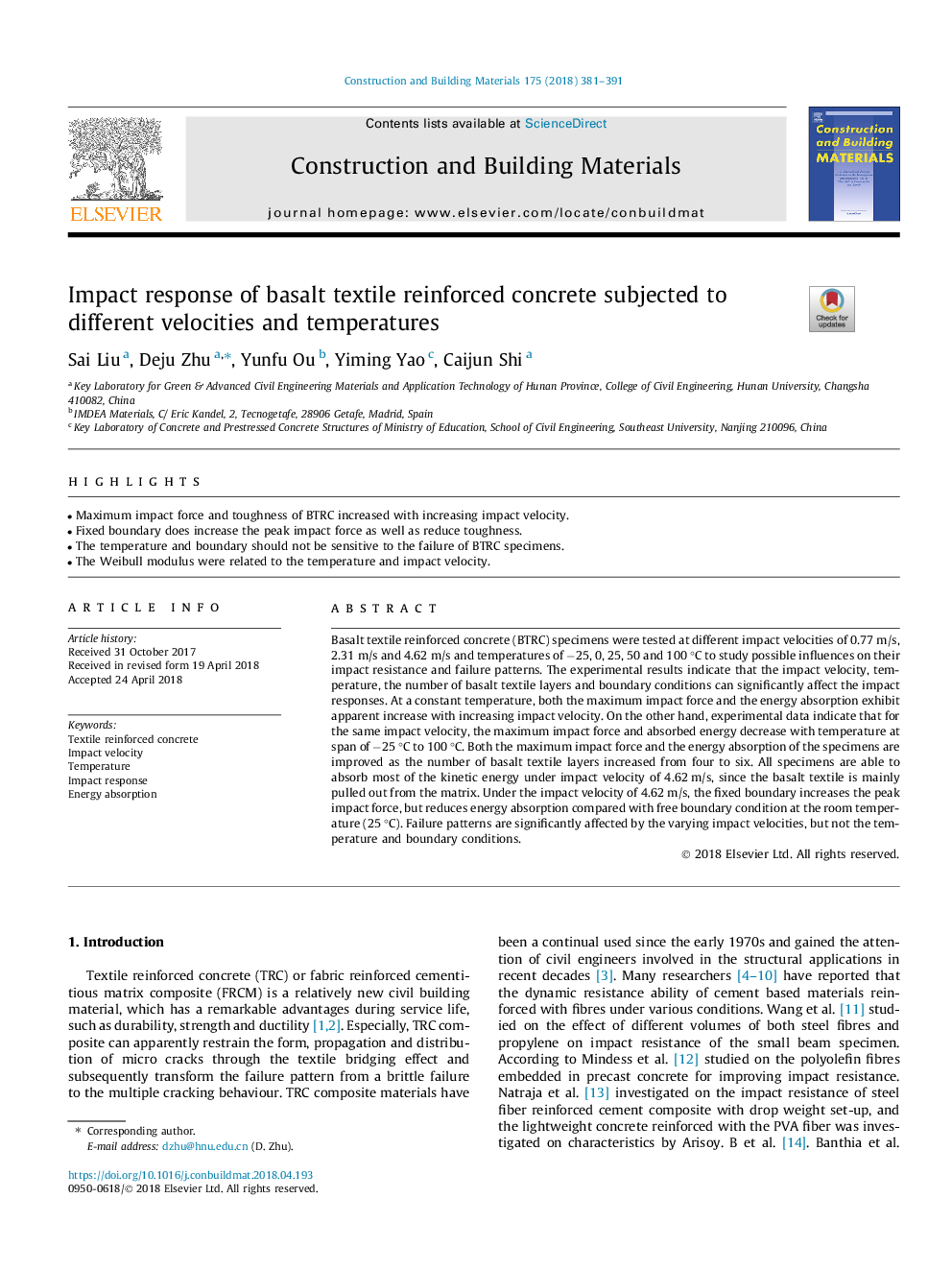| Article ID | Journal | Published Year | Pages | File Type |
|---|---|---|---|---|
| 6713486 | Construction and Building Materials | 2018 | 11 Pages |
Abstract
Basalt textile reinforced concrete (BTRC) specimens were tested at different impact velocities of 0.77â¯m/s, 2.31â¯m/s and 4.62â¯m/s and temperatures of â25, 0, 25, 50 and 100â¯Â°C to study possible influences on their impact resistance and failure patterns. The experimental results indicate that the impact velocity, temperature, the number of basalt textile layers and boundary conditions can significantly affect the impact responses. At a constant temperature, both the maximum impact force and the energy absorption exhibit apparent increase with increasing impact velocity. On the other hand, experimental data indicate that for the same impact velocity, the maximum impact force and absorbed energy decrease with temperature at span of â25â¯Â°C to 100â¯Â°C. Both the maximum impact force and the energy absorption of the specimens are improved as the number of basalt textile layers increased from four to six. All specimens are able to absorb most of the kinetic energy under impact velocity of 4.62â¯m/s, since the basalt textile is mainly pulled out from the matrix. Under the impact velocity of 4.62â¯m/s, the fixed boundary increases the peak impact force, but reduces energy absorption compared with free boundary condition at the room temperature (25â¯Â°C). Failure patterns are significantly affected by the varying impact velocities, but not the temperature and boundary conditions.
Related Topics
Physical Sciences and Engineering
Engineering
Civil and Structural Engineering
Authors
Sai Liu, Deju Zhu, Yunfu Ou, Yiming Yao, Caijun Shi,
